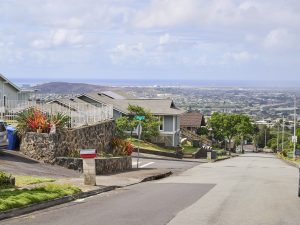
A new state law in Hawaii mandates that counties, including Honolulu, permit homeowners to build up to two additional housing units on eligible properties. Despite this legislative push, the city is finding it difficult to convince residents to construct even a single unit.
The law, enacted in July 2023, aims to address the ongoing housing crisis in Honolulu. The city has been grappling with a severe shortage of affordable housing, which has led to rising costs and displacement for many residents. This initiative is intended to provide homeowners with the flexibility to increase housing stock without extensive regulatory hurdles.
Yet, according to local officials, interest in building these additional units has been tepid. The Honolulu Department of Planning and Permitting reported that only a small fraction of homeowners have taken advantage of the new law. As of now, the city has received fewer than ten applications for building permits under this program, raising concerns about its effectiveness.
One of the key challenges appears to be the community’s perception of the initiative. Many homeowners express hesitation about the potential impact of additional units on their neighborhoods. Concerns about increased traffic, parking shortages, and changes to the character of their communities weigh heavily on their decision-making.
Local council member Andria Tupola has voiced her concerns regarding the slow uptake of the program. She emphasized the need for better outreach and education to inform homeowners of the benefits of additional housing units. “We need to ensure that the community understands how these additional units can help alleviate the housing crisis,” she stated.
The city council has been proactive in seeking solutions. Recent discussions have focused on enhancing community engagement strategies to demonstrate the importance of increasing housing density. By showcasing successful case studies from other regions, officials hope to shift public perception and encourage participation.
Moreover, the financial aspects of the initiative cannot be overlooked. The law allows homeowners to generate rental income from additional units, providing a potential financial incentive. However, the initial costs of construction and the complexities of permitting may deter many from pursuing this option.
According to a report from the Hawaii Housing Finance and Development Corporation, the state will need to produce over 50,000 new housing units by 2025 to meet demand. The current trajectory suggests that Honolulu may fall short of this goal unless significant changes are made to current strategies.
Looking ahead, city officials are considering additional incentives to motivate homeowners. Potential measures include streamlined permitting processes and financial assistance programs aimed at reducing construction costs. The goal is to create a more favorable environment for homeowners to invest in additional housing.
As Honolulu continues to navigate its housing challenges, the effectiveness of this new law remains a critical focus. The city must balance the need for increased housing with the desires of its residents to maintain the quality of their neighborhoods. Without heightened engagement and clearer benefits, the legislative intent may not translate into a successful housing strategy.
In summary, while the new law offers a pathway to address the housing crisis, Honolulu faces significant hurdles in making it a reality. Enhanced communication and support mechanisms will be essential if the city hopes to encourage homeowners to embrace the opportunity to build additional housing units.







